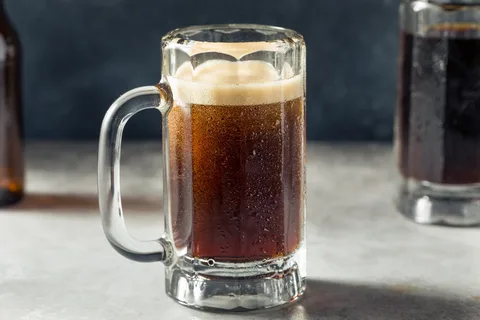14 Simple Ways to Break Through a Weight Loss Plateau

Understanding Weight Loss Plateaus
A weight loss plateau occurs when you no longer lose weight despite continuing with your diet and exercise regimen. This can happen for several reasons, including metabolic adaptations, loss of lean muscle, and not adjusting caloric intake as you lose weight. Recognizing that plateaus are a part of the process is the first step towards overcoming them.
Simple Strategies to Overcome a Weight Loss Plateau
Reassess Your Caloric Needs
As you lose weight, your body requires fewer calories to function than it did at your heavier weight. Use a calorie calculator to estimate your current needs based on your weight, age, height, and activity level.
Increase Physical Activity
Boosting your physical activity can help overcome a plateau. Try adding more intensity to your workouts or incorporating new exercises to challenge your body.
Track Your Intake
Sometimes, we underestimate how much we’re eating. Use a food diary or an app to accurately track your daily caloric intake, ensuring you’re not consuming more calories than you think.
Eat More Protein
Protein can increase your metabolic rate, reduce appetite, and help you retain muscle mass during weight loss. Ensure your diet includes a good protein source at every meal.
Consider Carb Cycling
Carb cycling involves alternating between high-carb and low-carb days. This strategy can help manage and potentially boost your metabolism, aiding in breaking through a plateau.
Stay Hydrated
Drinking enough water is essential for your metabolism to function optimally. Sometimes, thirst is confused with hunger, so staying hydrated can also prevent overeating.
Get Enough Sleep
Lack of sleep can affect the hormones that regulate appetite, leading to increased hunger and a preference for high-calorie foods. Ensure you’re getting 7-9 hours of sleep per night.
Manage Stress
High stress levels can lead to weight retention or gain, partly due to the hormone cortisol. Engage in stress-reducing activities such as yoga, meditation, or deep breathing exercises.
Adjust Your Calorie Intake
If you’re still not losing weight, you may need to adjust your calorie intake. Try reducing your current intake by 100-200 calories per day and monitor your progress.
Increase Fiber Intake
Fiber can help keep you full, reducing the likelihood of overeating. It also aids in digestion. Incorporate more fruits, vegetables, whole grains, and legumes into your diet.
Try Intermittent Fasting
Intermittent fasting involves cycling between periods of eating and fasting. It can help reduce calorie intake and stimulate weight loss by boosting metabolic rate.
Lift Weights
Strength training helps build muscle mass, which can increase your resting metabolic rate, allowing you to burn more calories even at rest.
Don’t Skimp on Fat
Healthy fats can keep you satisfied, making it easier to stick to your calorie goals. Include sources of unsaturated fats like avocados, nuts, seeds, and olive oil in your diet.
Be Patient and Persistent
Finally, it’s important to maintain patience and persistence. Weight loss is a gradual process, and plateaus are simply part of the journey. Stay committed to your healthy habits, and you will see progress.
FAQs on Breaking Through a Weight Loss Plateau
How long does a weight loss plateau last?
The duration of a weight loss plateau can vary from a few weeks to a month. If you’ve been stuck for more than a month, consider trying some of the strategies listed above.
Can I eat fewer calories to break a plateau?
While reducing caloric intake can help, eating too few calories can be counterproductive, leading to muscle loss and a further decrease in metabolic rate. Focus on a moderate reduction.
Should I increase my cardio workouts?
Adding more cardio can help, but it’s also important to incorporate strength training to build muscle and improve metabolism.
Is it possible to never break through a plateau?
With the right adjustments to your diet and exercise routine, it’s possible to overcome any plateau. It may require patience and trying different strategies to find what works for you.
How do I know if I’m eating too much or too little?
Tracking your food intake and using a calorie calculator to estimate your needs can help you determine if you need to adjust your calorie intake.
Can weight loss plateaus affect my mental health?
Yes, it can be frustrating and demotivating to hit a plateau. Focus on non-scale victories, such as improvements in fitness or how your clothes fit, and remember that progress isn’t only measured by the scale.
What if none of these strategies work?
If you’ve tried multiple strategies without success, consider consulting a healthcare provider or a dietitian. They can provide personalized advice and check for underlying issues that may be hindering your progress.
Conclusion
Breaking through a weight loss plateau requires a mix of dietary adjustments, exercise modifications, and patience. By reassessing your caloric needs, increasing physical activity, and ensuring adequate sleep and hydration, you can start to see progress once again. Remember, weight loss is a journey with ups and downs, and plateaus are a natural part of the process. Stay committed, be patient, and the results will follow.
- Ultimate Guide Comprehensive Review of Top Vape Mods By Vape Sourcing - April 18, 2024
- Gummy Galore: Sweet CBD Delights by Just Delta! - April 18, 2024
- Does Root Beer Have Caffeine? - April 11, 2024



